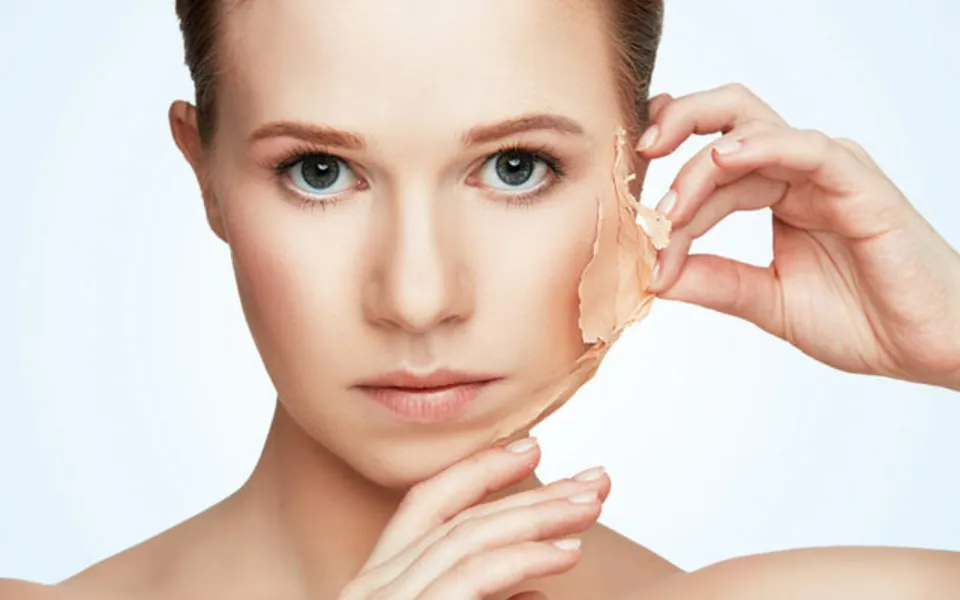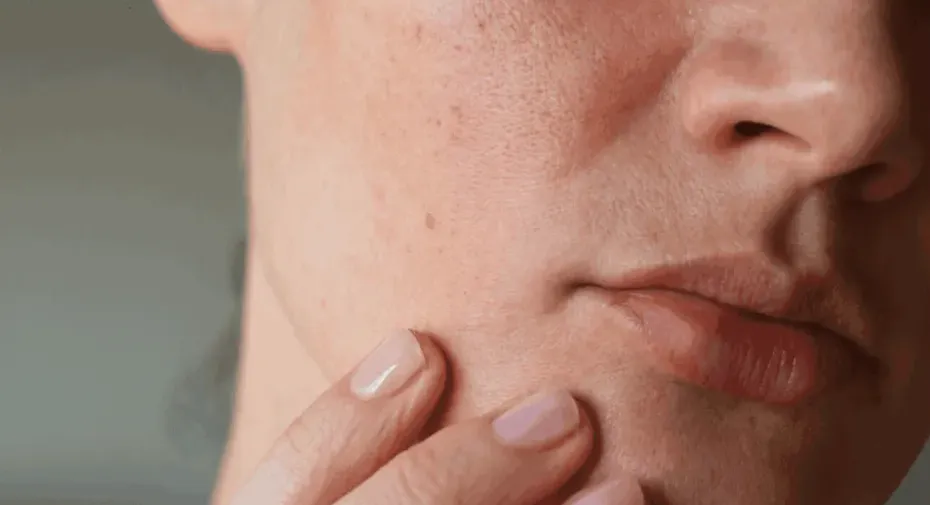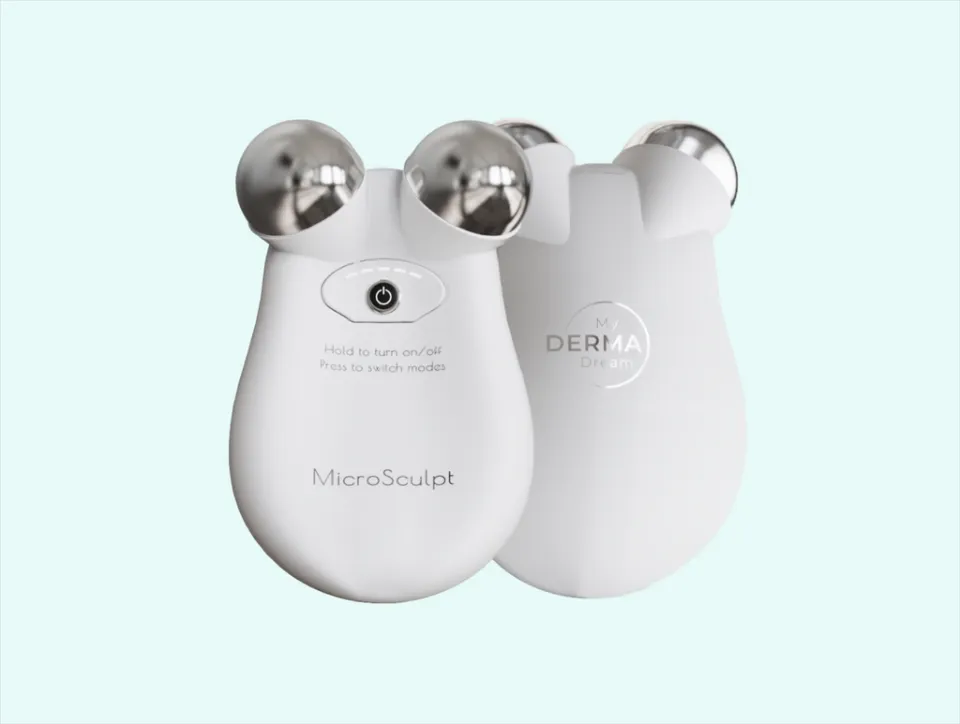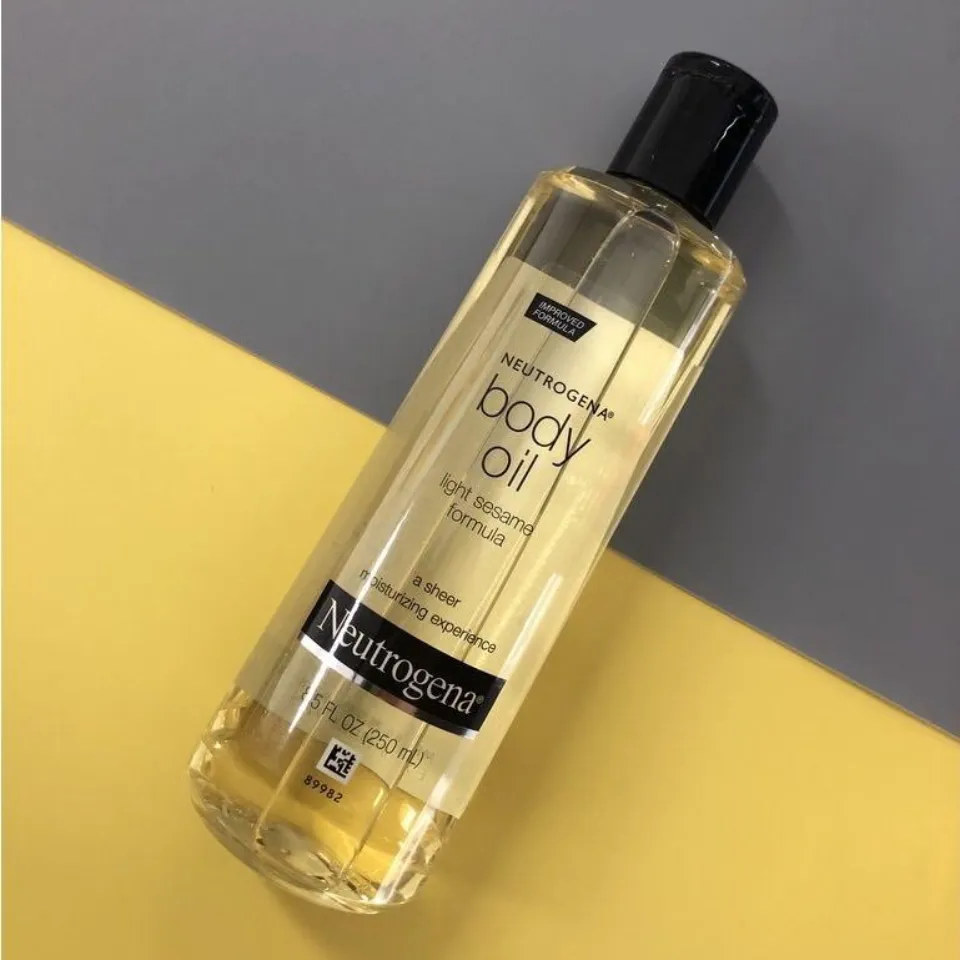After a restful night’s sleep, you awaken one fine morning to find that the skin on your face is peeling. The question comes: how to treat peeling skin on face? You won’t need to worry because of this post; your face will be smoother.
Skin on the face may peel for a number of reasons. Various efficient cures and preventative measures might be available depending on the cause.
Here, we’ll look at the causes of peeling skin on the face, as well as 11 ways to treat it while avoiding itchiness or discomfort.
Peeling Skin on Face Causes
Dry skin is the most common skin condition, and it could be why your face is peeling. The skin on your face, however, can peel due to a number of other conditions. You might be able to identify the specific cause of your symptoms by keeping an eye out for other symptoms.
Here are some potential causes of peeling skin:
- Sunburns. Sunburned skin that is red, irritated, and inflamed will slowly flake off to reveal new skin beneath.
- Skin peeling is a side effect of some medications. Skin scaling and shedding can be brought on by blood pressure medications, penicillin, topical medications, and anti-seizure drugs.
- Seborrheic dermatitis Although this condition usually affects the scalp, it can also appear on your face and result in peeling, redness, itching, and scaling.
- Eczema is an autoimmune condition characterized by scaly red or brown patches on your skin that may also peel.
- White, scaly patches of skin that can turn red and peel are a common feature of the chronic skin condition psoriasis. Patches of psoriasis may hurt and hurt badly.
- Fatigue, weight gain, thinning hair, and skin rashes can all be symptoms of hypothyroidism, which develops when your body doesn’t produce enough thyroid hormones.
- Rosacea is a chronic skin condition that can result in facial skin that is peeling, red or swollen, or broken blood vessels under the skin.
- infections caused by staph and fungi. Headaches, exhaustion, and inflamed skin at the infection site are all symptoms of these dangerous infections.
- Cosmetics or skin care products that cause an allergic reaction. Something you’ve put on your face, like a new moisturizer or foundation, can clog your pores and result in swelling or hives. Peeling skin on your face may also occur if your skin becomes dry and sheds after becoming irritated.
- Peeling skin can be caused by nutritional issues like niacin deficiency and vitamin A toxicity.
- Peeling skin syndrome is a rare medical condition where patches of your skin swell up and turn red before they start to peel off.
How to Treat Peeling Skin on Face? 11 Ways
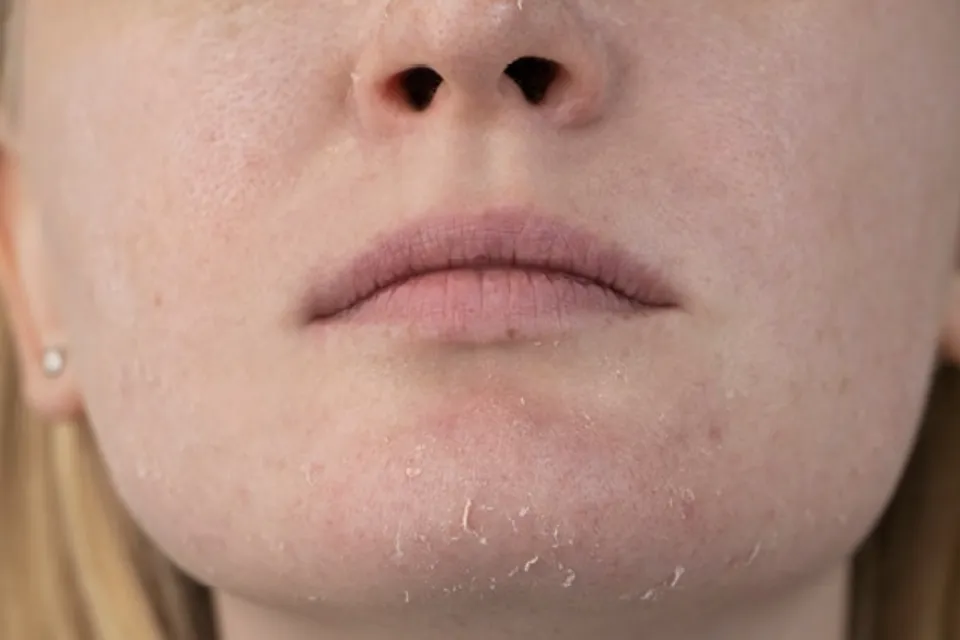
The home remedies for peeling skin listed below are worth a shot.
1. Apply Moisturizer
Using a moisturizer right after washing and drying the face can help lock in moisture. This will help to treat dry skin’s accompanying peeling. It is best to use a fragrance-free moisturizer.
According to the American Academy of Dermatology, moisturizers that contain one or more of the following ingredients may help soothe dry skin:
- shea butter
- lactic acid
- hyaluronic acid
- dimethicone
- glycerin
- lanolin
- mineral oil
Moisturizers and other items containing oil or petroleum should not be used on sunburned skin. These can make the skin warm up more quickly.
Acne can also develop as a result of using oil-based skin care products. Utilize oil-free, noncomedogenic facial products.
2. Use a Gentle, Fragrance Free Cleanser
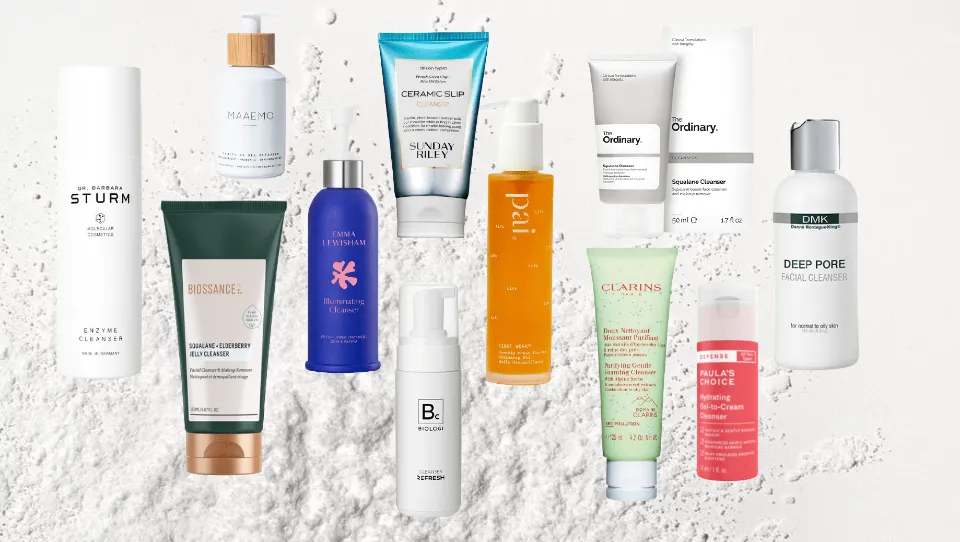
Making the switch to a mild, soap-free cleanser can assist in healing peeling skin on the face.
Avoid using antibacterial or perfumed cleansers because they can make your skin more dry.
3. Avoid Products That Dry Facial Skin
Be careful to use products that don’t strip the skin of oil when the skin on your face is peeling. Avoid using astringents, or products that contain:
- alcohol
- alpha hydroxyl acids
- benzoyl peroxide
Dryness can also be a result of topical retinoids. Retinoids, which are synthetic forms of vitamin A, are commonly found in skin care products.
You can avoid retinoids drying out your skin by switching to a product with a weaker retinoid or using them less frequently.
4. Take Shorter Showers With Lukewarm Water
To avoid further drying out of the skin, keep showers and baths to 5–10 minutes.
Additionally, instead of using hot water, which can quickly strip the skin of its oil, try using warm or lukewarm water. Showers with a lower temperature can also help to cool the skin and lessen sunburn pain.
5. Apply Aloe Vera
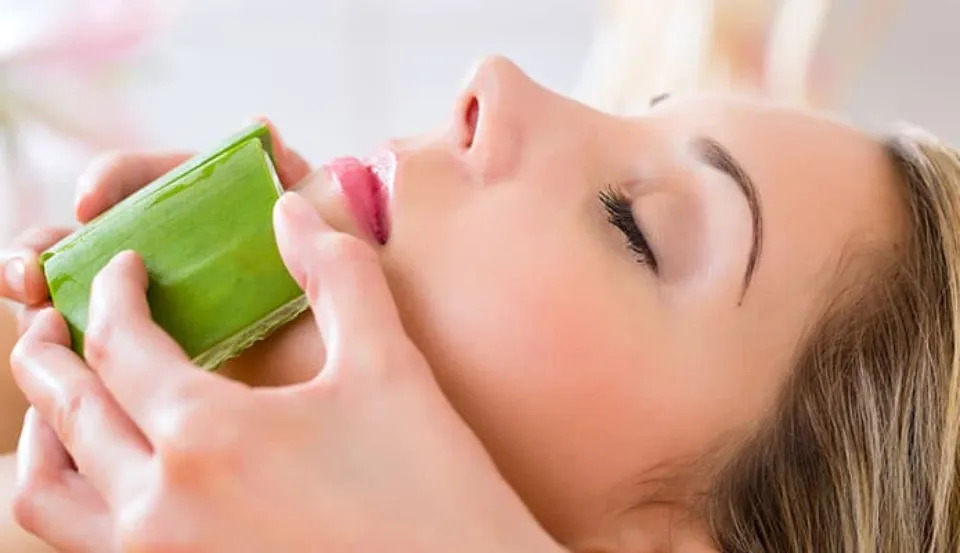
Aloe vera gel acts as an anti-inflammatory treatment for sunburn.
While their skin is healing, anyone with a sunburn should stay out of the sun for the time being. Wear protective clothing outside and try to stay as much indoors as you can.
Also advised by medical professionals is the use of sunscreen with an SPF of 30 to 45 or higher. One piece of literature recommends using sunscreen with an SPF of 45 or higher after applying aloe vera gel to any sunburned skin areas.
6. Dry the Face Gently
Use a soft towel to pat the face dry after washing, never rub it. This softer method may help stop additional peeling or soreness.
7. Drink Plenty of Water
Getting enough water each day can keep the skin hydrated and stop peeling.
When someone has a sunburn, which draws fluid from the rest of the body, it is crucial to drink plenty of water to avoid dehydration.
8. Wear Sunscreen Every Day
Daily use of sunscreen can help stop deterioration and additional peeling. Additionally, it can treat the signs of ailments like rosacea.
The American Academy of Dermatology advises using a water-resistant, broad-spectrum sunscreen with SPF 30 or higher.
9. Use a Humidifier
A humidifier makes the air more humid, which can help keep the skin from drying out.
Additionally, keep your distance from heat sources like an open fire because doing so can exacerbate peeling skin.
10. Consider Cortisone Creams
An over-the-counter cortisone cream, like hydrocortisone, may help reduce inflammation and heal the skin, depending on the reason why the skin is peeling. When psoriasis or atopic dermatitis are to blame for the peeling, this is most helpful.
However, it is best to consult a dermatologist before attempting any new treatments. One should speak with a pharmacist or doctor before deciding whether to use a product on their face.
11. Treat the Underlying Cause
Peeling skin on the face can result from a number of medical conditions, each of which has its own symptoms and course of treatment.
Antifungal drugs can be helpful, for instance, if a fungal infection is the reason for the peeling. Most of these are topical ointments, though some are also available as pills.
The dosage of thyroid hormones may need to be adjusted if hypothyroidism is causing excessive skin dryness and peeling.
Read More:
- How to Remove Dead Skin on Face?
- How to Regenerate Skin on Face?
- How to Get Rid of Textured Skin on Face?
How Long Does It Take for the Peeling to Stop
It may take 3–7 days for a sunburn to go away, and at least a month if the cause is dry skin.
Depending on how severely the skin is peeling, medical conditions like rosacea or psoriasis may require lifelong treatment.
When to See a Doctor
If you have a sunburn or an allergic reaction, your face may peel for three to seven days before it stops. You should consult a doctor if your skin is peeling frequently or if it doesn’t stop after being exposed to the environment.
Call a doctor right away if you notice:
- blistering over large portions of your body
- fever or chills that occur alongside a sunburn or allergic reaction
- nausea, dizziness, or confusion that sets in around the same time your face began peeling
- skin that oozes a yellow liquid, smells foul, or cracks and does not stop bleeding
Takeaway: How to Treat Peeling Skin on Face
In most cases, peeling skin on your face is a temporary symptom triggered by an irritant or environmental factor.
Avoid applying makeup over peeling skin to hasten healing, and refrain from trying to remove the skin from your face on your own as this could result in dark spots or scarring. Peeling skin ought to go away on its own after a week.
See a doctor if peeling skin is not responding to home remedies or is causing significant discomfort.
You Might Also Like: How to Get Smooth Skin on Face?
FAQs
Why is My Skin Peeling on My Face After Skincare?
Allergic response to cosmetics or skin care items.
Is Skin Peeling Good for Your Face?
A light chemical peel improves skin texture and tone and lessens the appearance of fine wrinkles. Though subtle, the effects get stronger with each treatment.
How Long Does It Take for Face Peeling to Go Away?
Peeling usually lasts 3-5 days, depending on the actual peel treatment.
Is Vaseline Good for Peeling Skin?
When skin is so dry that it peels, petroleum jelly can soothe the irritation and help skin heal.

